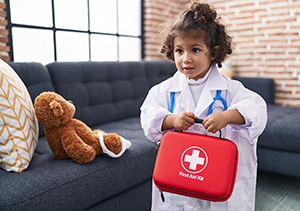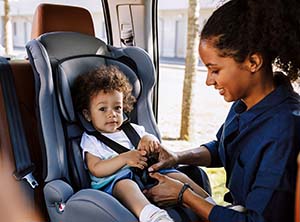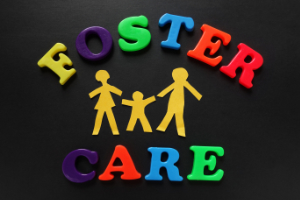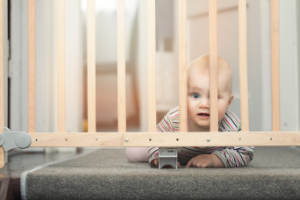Category - safety
Posted by Mary Thompson
E-cigarettes and vaping have exploded in popularity among adolescents in recent years, evolving from a niche trend to a widespread concern in middle schools and high schools alike. What started as “safer” alternatives to cigarettes has morphed into devices that many teens use daily, often in secret.
This trend is especially relevant in school settings, where teachers and counselors may be the first to notice changes in behavior, health, or academic performance. Beyond the immediate health risks, vaping can disrupt learning, shift social dynamics, and contribute to disciplinary or mental health issues.
This blog is crafted for educators, school counselors, and youth professionals in Pennsylvania (and beyond). Its goal is to help you spot warning signs of vaping, understand the motivations behind it, and respond effectively with support, not shame.
What are E-Cigarettes and Vaping Devices?
E-cigarettes (also called electronic cigarettes or vapes) are battery-p...
Posted by Mary Thompson
Imagine a bright, curious child who struggles to read a simple sentence or a student who finds it impossible to sit still and focus in class. Learning disabilities affect millions of children worldwide, making academic and social experiences more challenging. According to the National Center for Learning Disabilities, approximately one in five children in the U.S. has a learning or attention issue. With the right support and strategies, these children can thrive both in and outside the classroom.
Recognizing and addressing learning disabilities early can make a world of difference in a child’s confidence and ability to succeed. By understanding common challenges and implementing practical strategies, parents and teachers can work together to ensure every child reaches their full potential.
What Are Learning Disabilities?
Learning disabilities are neurological disorders that affect how individuals process information. These challenges are not related to intelligence but r...
Posted by Mary Thompson
Returning to school is an exciting time filled with new friends, fresh opportunities, and a wealth of learning experiences. Yet, it’s also a critical moment for parents and caregivers to reinforce important lessons about personal safety and boundaries. Engaging in proactive and age-appropriate discussions empowers children to navigate their school environment confidently while remaining vigilant about potential risks.
This guide aims to help parents approach these conversations thoughtfully, offering practical tips to ensure their kids feel secure and supported.
Why Safety Conversations Are Essential
The start of a new school year introduces children to unfamiliar environments, people, and routines, all of which can expose them to potential risks. Bullying, inappropriate behavior, or unsafe situations can arise in settings where trust and boundaries are not yet fully established. Safety conversations equip children with the tools to identify and respond to such cha...
Posted by Dr. Julia Tortorice
As the holiday season approaches, we all start planning for festive gatherings, holiday parties, and maybe even a much-needed date night. For parents, though, the excitement can come with a side of stress when it comes to the question: who will watch the kids? Finding someone trustworthy to care for your little ones is not as easy as it sounds, but with some preparation and helpful tips, you can feel confident knowing you’re making a great choice.
Where to Find a Babysitter?
When it comes to babysitters, there’s no one-size-fits-all solution. Some parents prefer a close friend or family member, while others like to hire from a pool of experienced local sitters. A great place to start is through recommendations from friends, family, or other parents in the neighborhood. Personal referrals are often the most reassuring since these are people who can vouch for the sitter from firsthand experience.
Local agencies or childcare websites are also popular and can provide a...
Posted by Mary Thompson
Amid the hustle and bustle of everyday life, it's easy to overlook the importance of being prepared for emergencies. As a mother, wife, and someone who values safety, one can understand the significance of having a well-stocked first aid kit in every home. From minor scratches and bruises to more severe injuries, having the right supplies on hand can make all the difference in ensuring the well-being of our loved ones. This blog will discuss why having a well-equipped first aid kit is necessary for every household or car.
If you are a parent, you know that the health and safety of your family come first. Children, in particular, have a knack for getting into all sorts of mishaps, whether a scraped knee from playing outside or a sudden fever in the middle of the night. A readily available first aid kit allows you to respond swiftly and effectively to their needs, providing comfort and reassurance in times of distress.
Accidents and emergencies can occur unexpectedly in our fas...
Posted by Julia Tortorice
With car crashes being the leading cause of death for people between the ages of 1 and 54, child safety in vehicles is a subject that can never be discussed enough. Although no parent, guardian, or transportation driver wants to be involved in an accident, it happens more often than we'd like, and it's critical to take all possible measures to ensure our youngest passengers are as safe as possible. As technology has advanced and more regulations have been established, safety has become a top priority – especially in developing car seats and other safety equipment that keeps children safe.
Whether you are a new parent or have a job that requires you to be around children, it's essential to learn the rules of the road and understand the best practices for ensuring child safety in vehicles. By staying educated and vigilant, you can play a crucial role in reducing the likelihood of accidents and injuries while safeguarding the well-being of the youngest members of our ...
Posted by Julia Tortorice
In many states where the sun isn't shining year-round and swimming pools are emptied during the winter, it's more common to find adults that never took the time to learn how to swim. Swimming is often seen as a quintessential life skill, an activity for fun, fitness, or even survival. Yet, according to a survey by the Red Cross, while 80% percent of Americans can swim, only 56% of them can perform basic skills needed to save their life in the water. For many, learning to swim can feel daunting or even impossible. However, regardless of your age or experience level, it's important to remember: it's never too late to learn how to swim.
Swimming is an essential skill due to its significant safety implications, as it can protect individuals from drowning, a leading cause of accidental death worldwide. Furthermore, swimming offers numerous health benefits, serving as a comprehensive, low-impact workout that enhances cardiovascular fitness, strength, flexibility, and endur...
Posted by Julia Tortorice
With social media being so readily accessible these days, it’s hard to set limits and boundaries for children wanting to dive deep into the world of social networks. After much deliberation, as parents try to find the right balance of how much or even if our young teenagers should be on social media, new research has surfaced that indicates growing concerns for any social media engagement for people under the age of 13. In fact, in May 2023, U.S. Surgeon General Vivek Murthy issued an advisory about the usage of social media and its risk of harm to the mental health and well-being of children and adolescents.
The advisory came after research unveiled that roughly 95% of young people ages 13-17 reported using social media “almost constantly.” The press release published by the U.S. Department of Health and Human Services came with the Surgeon General’s warning that explained how social media exposes children to various detrimental content, encompassing vi...
Posted by Emily Pazel
It’s time to dust off those Halloween decorations and put them on display because the annual spooky holiday is right around the corner. Dressing up as your favorite character or costume is always a must, and something people plan out months ahead of time. And for some, trick-or-treating might not even be a part of the tradition any more. Maybe it’s just watching scary movies with a big bowl of candy corn in front of you. But for the hundreds of thousands of trick-or-treaters that still make their rounds in the neighborhood for candy, what could go wrong?
Well, to start, trick-or-treating during a pandemic has not been as easy as it seems. For many, trick-or-treating was canceled last year and – depending on where you live – could see restrictions again this year. However, if trick-or-treating is allowed in your area, you should always try to follow the CDC’s guidelines to ensure your holiday traditions are safe. So once you have read the guidelines and ...
Posted by Emily Pazel
Have you ever considered becoming a foster care parent, but didn’t know where to start or how much it would entail? Many times, taking care of a child in the foster care system is easier said than done. It involves finding the right fostering program, becoming certified into the foster care system, staying up-to-date on your inspections and certifications and preparing your home for taking care of a child that may be staying with you for an extended period of time.
Nationwide, according to the Foundation for Foster Children, there are roughly 500,000 children and youth in the foster care system. Unfortunately, children in the foster care system typically “change families, schools and communities with appalling frequency,” and roughly two-thirds of children end up moving seven or more times while in foster care.
Typically, children are placed into a state-run foster care system set up to provide alternative living situations for children whose parents...
Posted by Mary Thompson
As we all know, safety is important and your child’s safety is a top priority. It's easy for babies and toddlers to get in trouble because they don't know what danger is, which is why they need constant supervision. And even though your baby is not in the crawling stage yet, there’s still a lot of things you have to prepare for and tools you are going to need to keep them away from danger as they grow.
Before your little one starts to curiously wander around the house you must know the places they shouldn't be allowed in, so take your time and look around your home and make sure it is free of any hazards before your baby is born. Because before you know it they will be walking and climbing things.
Young kids have the highest risk of being injured at home because they spend most of their time there. Therefore, as parents we must prepare and prevent any accidents from happening. If you’re a first time parent, don’t worry, here are a couple of tip...
Posted by Emily Pazel
Nowadays, social media is everywhere. And when we say everywhere, that’s exactly what we mean. Not only is it used by billions of people to connect with friends, family and neighbors, it’s also used by thousands of businesses as a digital marketing strategy to collect data, influence shopping trends and ultimately, make a buck or two from you, the consumer.
But what makes it so addicting? Why can’t we seem to put down our phones? And how exactly is it influencing the people around us? In particular – how is it affecting the people most at risk: our younger population?
Reports have shown that 75 percent of American teenagers have social media profiles, and that using social media has become a huge part of a teenager’s normal daily life. Of those using social media, reports have shown that 51 percent of teens visit social networking sites on a daily basis, and that more than a third of teens re-visit their main social networking site several times a da...
Posted by Sandy Thompson
The Pennsylvania Department of Education states they are “committed to offering guidance and resources to support and help protect school communities during this pandemic.” Although the plans for how and when schools reopen is still a moving target, the Pennsylvania Department of Education has provided a Preliminary Guidance for the Phased Reopening of Pre-K to 12 Schools.
The reopening of schools depends on the public health conditions and will vary by county. Additionally, the phased reopening will be designated by Governor Wolf’s Process to Reopen Pennsylvania. Since the reopening phases may be adjusted due to the current public health, schools have been tasked with maintaining flexibility in relation to reopenings.
With the increasing number of positive COVID-19 cases in Pennsylvania, the state is encouraging residents to continue social distancing, increased hygiene practices and to wear face coverings in public. Additionally, many stores and social meeting...
Posted by Emily Pazel
Autism spectrum disorder is a bio-neurological developmental disability that generally appears in children before the age of 3, and can cause significant social, communication and behavioral challenges. And believe it or not, autism is generally more common than you think, affecting nearly 1 in 59 children.
If you happen to work with children or are around children more often than not, there is a good chance that you know or will encounter someone living with autism. And it’s important to know how to approach teaching them or having them in your office while keeping them comfortable and at ease. With April being National Autism Awareness Month, we are taking the opportunity to dive into learning more about this disability that affects many different people on many different levels.
What is Autism?
Autism, according to the National Autism Association, is a developmental disability that impacts the normal development of the brain in the areas of socia...














